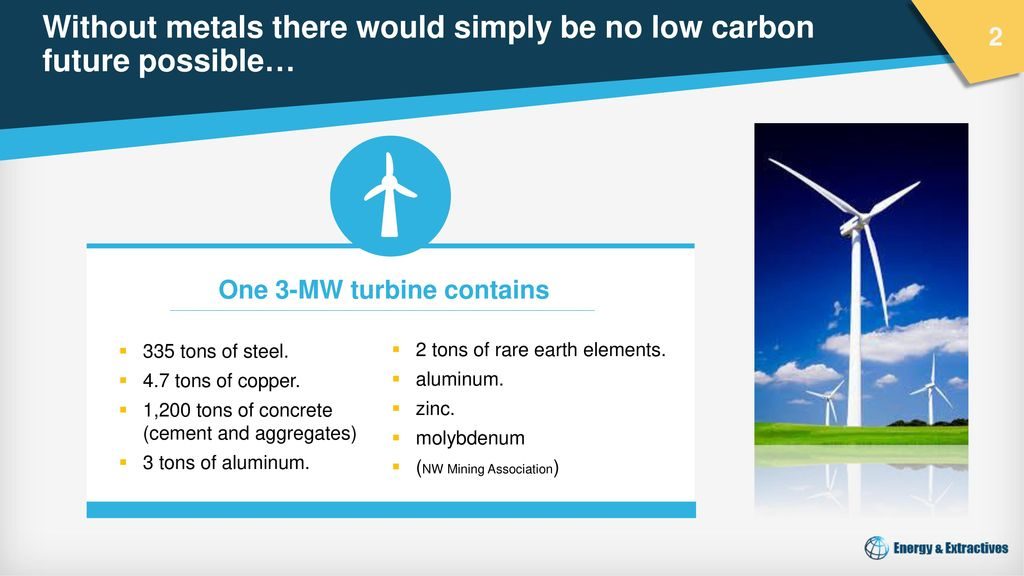With Rise of Electric Vehicles, a New Foreign Energy Dependence Looms
Self-identified environmentalists in Minnesota want to increase the adoption of wind, solar, and electric vehicles in our state, but they also generally oppose opening new mines in Minnesota that would help provide the copper, nickel, and cobalt that will be needed to actually build the wind turbines, solar panels, and electric cars they profess to care so much about.

Cobalt is an especially interesting element because Minnesota contains most of the cobalt resources in the United States. Currently, a majority of the world’s cobalt is mined in the Democratic Republic of the Congo, which is neither democratic or a republic. The United Nations International Children’s Emergency Fund (UNICEF) estimates as many as 40,000 young boys and girls are working in cobalt mines, which should raise thorny ethical questions for environmentalist demographics that drink fair trade coffee.
In addition to these concerns, there are also concerns about the availability of these resources, period. If the U.S. were to dramatically switch from the internal combustion engine, it would likely abandon it’s new-found abundance of oil for another scarcity regime centered around importing mined materials from other countries with less-stringent environmental protections.
The following article explains this situation in greater detail. It was originally published in The Houston Chronicle:
WASHINGTON — Energy Secretary Rick Perry earlier this month said he would put more federal money into developing processes to recycle the raw materials used to make lithium-ion batteries, raising the question of whether Americans should be worried about shortages of the key ingredients for batteries that power everything from smartphones to electric cars.
Forecasts say that electric vehicle sales are about to take off worldwide, in part propelled by China’s announcement last year that 20 percent of new-car sales there — about 7 million vehicles — would be electric or plug-in hybrid vehicles by 2025. That has raised questions whether there’s a large enough supply of the raw materials that go into batteries, namely lithium, cobalt, and a hodgepodge of common metals like nickel and graphite.
Perry, speaking in Washington, explained the recycling program as an effort to reduce the nation’s dependence on foreign sources for these metals. With batteries playing a large and expanding role in the U.S. energy system and economy, Perry said the program would “strengthen our energy security and expand our economic security and bolster national security.”
Lithium supplies are geographically diverse, with mines across the globe. Australia and Chile are the largest producers. Lithium mines have already increased production, creating a surplus that sent prices of the metal crashing down last year. But the long-term outlook is strong for demand and prices, analysts maintain.
“The demand for lithium isn’t really in question, it’s just a matter of when that demand really kicks in,” an analyst at Benchmark Mineral Intelligence told Reuters last year. “You just have to look at the number of battery factories that are being built around lithium-ion technology.”
Cobalt is more problematic. About two thirds of the world’s supply comes from Democratic Republic of the Congo, a war-torn African nation with a long history of corruption. A report by Fortune magazine last year documented how much of that cobalt is hand-mined by children and then sold to Chinese merchants for the equivalent of $9 per day.
Nervous about the reliability of the supply chain, cobalt companies are looking to establish mines in more stable parts of the world such as Canada and Scandinavia. In the meantime, cobalt prices have been on a roller coaster, spiking to more than $40 a pound in early 2018 before falling to half that amount by year-end, according to the research firm InfoMine.
If the United States were able to create a robust system for recycling the cobalt and lithium from our old iPhones, tablets and electric car batteries, then the country would theoretically be less susceptible to the inevitable swings of what are highly volatile markets.
As of yet, the technology is not there to recycle lithium ion batteries economically. But the possibility has piqued the interest of scientists.
“I have probably about five laptops. They all have lithium batteries,” Zheng Chen, a nanoengineer at the Sustainable Power and Energy Center at the University of California-San Diego, told the Los Angeles Times last year. “There is no clear system to recycle and retrieve them. From a battery researcher (standpoint), I know this is something we have to face, we have to solve.”